Intel: For Mainstream Gamers, Our IGPs Are Equivalent to Discrete GPUs
by Anton Shilov on January 14, 2016 12:03 PM EST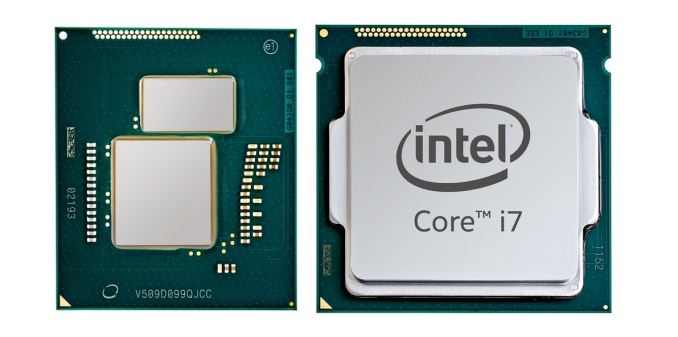
Intel’s integrated graphics processors (iGPUs) are the most widespread PC-class graphics adapters on the planet. Enthusiasts of high-performance personal computers do not use Intel’s iGPUs, but the world’s largest developer of microprocessors says that for mainstream and casual gamers its graphics solutions offer performance, which is comparable to that of inexpensive discrete video cards.
“For the mainstream and casual gamer, we have improved our Iris and Iris Pro graphics tremendously,” said Gregory Bryant, vice president and general manager of the desktop client platforms at Intel, at the J.P. Morgan Tech Forum at the 2016 International CES. “We have improved our graphics performance [by 30 times] from where it was five years ago. We believe that the performance of Intel’s integrated graphics today, what we offer in the products […], is equivalent to the performance of about 80% of discrete [GPU] installed base.”
Intel has been improving its integrated graphics cores at a rapid pace after the company cancelled its discrete graphics processing unit code-named Larrabee in 2010. Thanks to timely transition to newer process technologies, Intel could increase transistor budgets of its central processing units significantly every couple of years. As the company did not increase the number of general-purpose cores inside its mainstream CPUs for desktop and mobile personal computers in the recent years, the lion’s share of that additional transistor budget was spent on iGPU-related improvements.
Intel considers its code-named Clarkdale and Arrandale processors its first-generation CPUs with integrated graphics (which is not entirely correct since these CPUs had two dies: the processor die as well as graphics and integrated memory controller die). Back then, Intel’s most advanced iGPU featured 12 execution units (EU) with peak compute performance of around 43 GFLOPS. Since then, the architecture of Intel’s integrated graphics processors has evolved to accommodate new features and gain performance. Today, each EU features two ALUs that can execute up to four 32-bit floating point or integer operations per cycle (in fact, one of the two ALUs in Intel’s Gen8 EU also supports double precision 64-bit floating point operations). Intel’s latest microprocessors — Broadwell with GT3e and Skylake with GT4e graphics cores — have Iris Pro iGPUs with 48 and 72 EUs as well as peak compute performance of 883 and 1152 GFLOPS, respectively.
While Intel did not define what it considered to be the installed base of discrete graphics cards, it is obvious that the company compares its recent Iris and Iris Pro integrated graphics processors to discrete graphics adapters sold in the last five or even more years and which are currently in use.
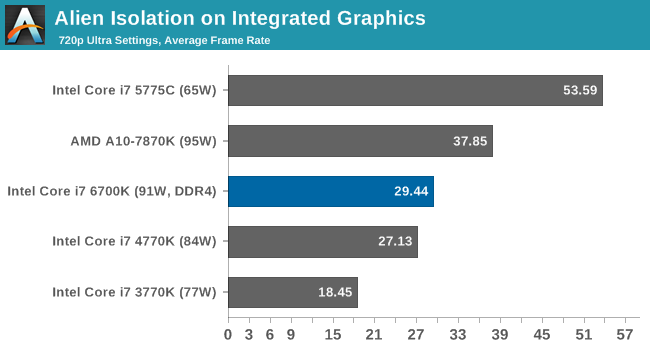
Intel’s latest integrated graphics processor found in its Skylake chips — the Iris Pro 580 with 72 execution units and 1152 GFLOPS compute performance — should outperform even more advanced discrete graphics processors. In fact, AMD's latest integrated graphics core also outperforms the low-end graphics card (albeit, by a small margin).
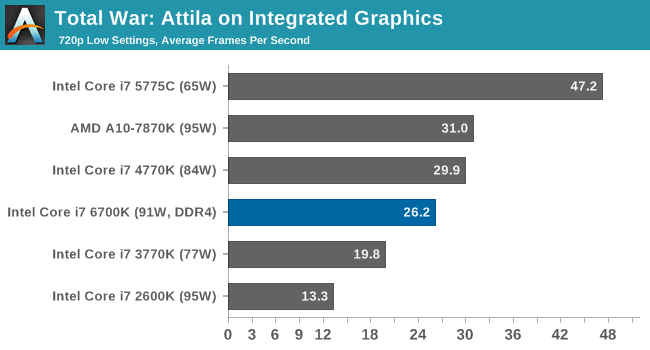

Because many people do not play demanding games that use the latest application programming interfaces (APIs), performance and features of Intel’s modern iGPUs may be enough for their needs. Moreover, since casual and even some mainstream gamers usually buy low-end graphics adapters, Intel’s Iris Pro 6200 and Iris Pro 580 can actually outperform such GPUs (or offer similar performance). It is not clear whether 80% of discrete graphics boards currently in use belong to the entry-level segment, but it evident that contemporary iGPUs are somewhat better than cheap video cards.
Even though enthusiast gamers do not use Intel’s high-end iGPUs, the company continues to thrive because of PC gaming. According to Intel’s management, sales of its Core i7-series microprocessors set records in Q2 2015 despite weak demand for personal computers overall. Moreover, Intel claims that shipments of high-end enthusiast-class hardware in general are at all-time high and growing. Intel sells not only powerful Core i7 CPUs with unlocked multiplier to demanding gamers, but also chipsets, solid-state drives, various controllers and other components for high-end PCs. As a result, the company takes advantage of increasing demand for powerful personal computers.
Source: Intel Investor Relations


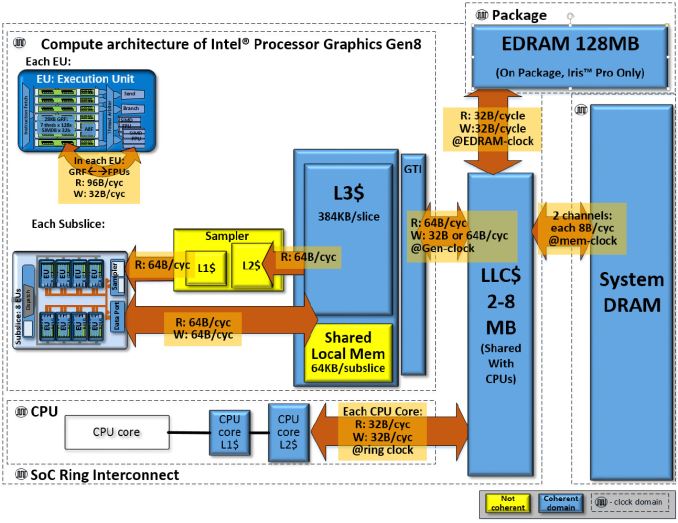
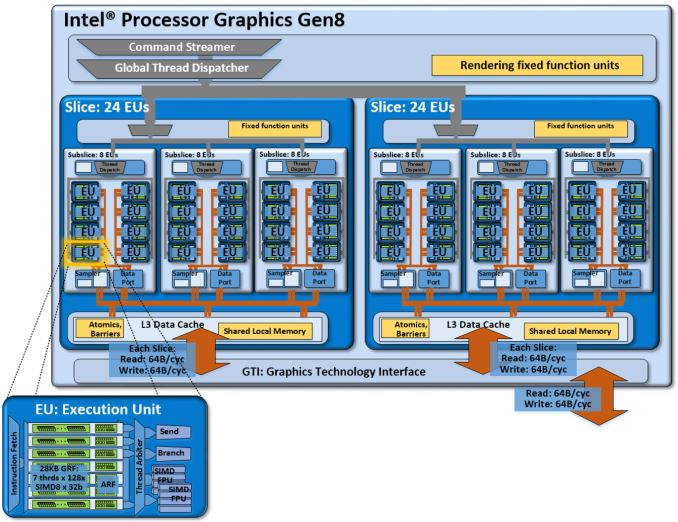








96 Comments
View All Comments
rhysiam - Thursday, January 14, 2016 - link
If you put your limit at discrete GPUs under $100 I'd probably agree, but you can get a 750ti or 260X for a touch over $100, and you can find 370s and 950s for under $150. These will all be substantially better than any integrated solution at the moment. Maybe a next gen Iris Pro with Lvl4 cache could rival a 750ti/260x, but you can bet they'll be a lot more expensive too.Namisecond - Tuesday, January 19, 2016 - link
I think there is a big disparity between the industry's perspective of "gamers" and the gaming community's perspective of "gamers"You also might want to double check that perspective of "if you happen to be a poor guy, you will buy something in the 150-$250 range". That's very gamer-centric, elitist thinking. It's like saying "you must be poor if you're buying an Infinity Q series instead of a Mercedes S-class (or insert your choice of midrange luxury car line as opposed to a premium, far more expensive car line)"
Concillian - Thursday, January 14, 2016 - link
I think mainstream is more people who play games like LoL / DotA / Hearthstone / CS:GO / Minecraft. These are the games my teenage nephew plays on my computers, even though my PCs are capable of 1080p high settings, he plays games that would actually be run perfectly fine on an IGP.Dribble - Thursday, January 14, 2016 - link
Headline is a bit disingenuous - when Intel says "Our IGP's" they mean the Iris pro found on a tiny % of relatively expensive Intel machines.Hence almost all Intel IGP's out there aren't equivalent to discreet gpu's, and the ones that are cost a lot. Then there's the drivers which despite improvements since the really bad old days, are still behind Nvidia and AMD for stability and support.
Winterblade - Thursday, January 14, 2016 - link
Completely agree, also I from the headline l expected benchmarks comparing the whole family of Intel igp's vs mainstream gpu's from amd and nvidia, not reused ones from previous reviews.To be honest this is the kind of article that makes me lose a little bit of faith in technology journalists and/or sites... Ambiguous headlines, lack of evidence and that gut feeling of some undisclosed agreement with the manufacturer...
Please keep or beloved Anandtech above that.
zodiacfml - Thursday, January 14, 2016 - link
First time I do agree with a complaint. This really feels a promotion for Intel since Anandtech already mentioned that it is quite pointless to put the best graphics in expensive CPUs. Casual gamers usually use laptops. I can say this from experience as I bought a cheap laptop with 720p diplay last year with an i5-5200u specifically for Diablo 3 gaming, and with the lowest settings, it rarely reaches gameplay of 50fps or more.speely - Thursday, January 14, 2016 - link
I don't think it's AT. I think it's the author, Anton.He got hired here a couple months after he got fired from KitGuru for writing, in an article about AMD's then-upcoming DDR4 RAM, that people who buy AMD products don't care about performance, and base their purchasing decisions on how cool the thing looks.
He's gotten a little better about disguising his fanboyism, but it's still there, and if you're aware of it, the tone of his articles makes much more sense.
MrSpadge - Thursday, January 14, 2016 - link
Yeah, I would at least have expected a comment from the editor that currently Intel has not even announced any Skylake GT4e models. We have no idea if they will even bring them to the desktop or when."Intel’s latest integrated graphics processor found in Skylake chips..."
I don't think that counts as "being found".
And I agree with the driver: I really liked using my Ivy GPU to run Einstein@Home. but not any more with Skylake! An OpenCL driver bug leads to incorrect results, rendering the work pretty much useless. I've reported this months ago to Intel, with details and even delivering the source code.. apparently they couldn't fix anything yet :/
nandnandnand - Thursday, January 14, 2016 - link
That's right. GT4e/Iris 580 might be impressive... like a unicorn is impressive.I want GT4e/Iris 580 on the market and benchmarks compared to discrete cards and AMD's top integrated graphics.
ketacdx - Thursday, January 14, 2016 - link
I was thinking the same thing. First off, the price of the Iris Pro editions of CPU's cost significantly more to the point almost costing as much as a low end dGPU. Secondly, No low end or mainstream gamer builds their own PC's and OEM's always put in base model CPUs and not Iris Pro enabled chips so the mainstream dont even get Iris Pro. You need to examine who is making the purchases and what they do with it. Steam says it all. #1 most popular card: Intel G33/G31 Express, #2: Intel 82945G Express, #3:NVIDIA GeForce 6100, #4 Intel HD Graphics 3000, #5 NVIDIA GeForce 7025. The highest percentage of users to an Iris enabled Card is:0.45% for Intel Iris Pro Graphics 5200 which is lower than Geforce GTX 980 at 1.08%.